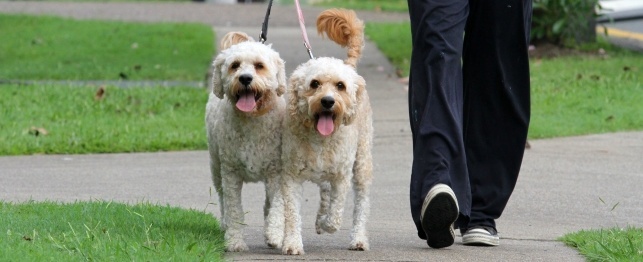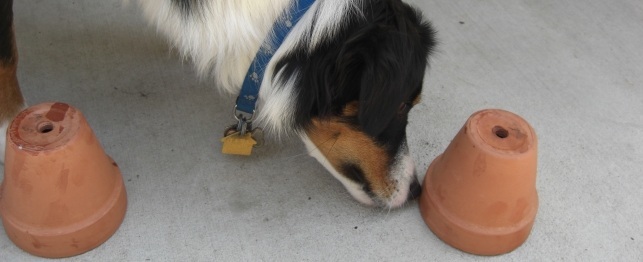Running and Jogging with Your Dog
Dogs
If you're planning to lurch from your couch to the road in search of fitness, you may find it easier with a partner. But finding a jogging partner with the same amount of commitment as you is pretty tough – too often both the flesh and the spirit are weak.
One partner that won't let you down on the track is your faithful dog. He's usually ready, willing and able to help you shed that holiday weight you may have packed on, or to help you maintain the physique you've sweated so much for.
However, before you grab your running shoes and his leash, there are a few things you'll want to remember:
He may be as out of shape as you, so go easy. Before starting him out on your exercise program, have him checked by a veterinarian (his heart, lungs, joints, etc.). By the way, if you haven't been exercising for some time, you may want to consider a checkup as well.
Start out slowly and build up endurance. Warm him up by walking first, followed by a short jog. Let him cool down with a walk at the end.
Watch him carefully for any signs of discomfort. Dogs are eager to please and yours will be thrilled to be out running with you. Unlike you, they'll ignore or even be unaware of pain. If you see him struggling or tiring, walk.
Mind the weather. Dogs cannot tolerate heat as efficiently as you can. Consequently, they're at greater risk for heat stroke or dehydration during warm weather. The best time to jog is early in the morning or the evening, to avoid the hottest time of day.
Bring enough water for yourself and your dog.
You should also be aware of the ground you're running on. Your dog doesn't have the fancy jell-filled shock absorber system that graces your feet; he's running on his own pads. If he's been cooped up inside, the pads will likely be soft. Give him time to build endurance by walking for a distance, then some running, followed by walking. As his pads toughen, you can increase the time you spend running.
The most common injury is pad wear. If your dog shows signs of soreness or has trouble getting to his feet, you'll want to take him to the veterinarian. One way to decrease the chance of injury is to use a product called Pad Guard®, which is a spray applied directly to your dog's feet. The spray forms a protective barrier.
His pads, by the way, are part of his perspiration system. Your dog cools down by panting and sweating through the pads. If the ground is hot, he won't be able to cool down as much (another reason to run in the morning or evening).
If you see signs of overheating, stop immediately and cool him down slowly with cool or tepid water (not cold). Signs of overheating include the following:
Excessive panting
Increased salivation
Red gums
Increased heart rate
Vomiting
Diarrhea
Weakness
One last point: keep your dog leashed, for his protection and the protection of others. Even an obedient dog may suddenly want to greet another animal or person. In high traffic areas, this could lead to tragedy. Follow these steps and you both can run to a healthier lifestyle.

 How Much Exercise Does My Dog Need?
How Much Exercise Does My Dog Need?
How Much Exercise Does My Dog Need?
How Much Exercise Does My Dog Need?
 NILIF Behavioral Shaping For Dogs
Why You Should Consider NILIF
Do you have a stubborn, pushy
NILIF Behavioral Shaping For Dogs
Why You Should Consider NILIF
Do you have a stubborn, pushy
 Fun at the Park for You and Your Dog
Fun at the Park for You and Your Dog
Fun at the Park for You and Your Dog
Fun at the Park for You and Your Dog
 Flower Pot Scenting Game for Dogs
Flower Pot Scenting Game for Dogs
Flower Pot Scenting Game for Dogs
Flower Pot Scenting Game for Dogs
 Doggie Play Dates: Are They for Your Dog?
Doggie Play Dates: Are They for Your Dog?
Doggie Play Dates: Are They for Your Dog?
Doggie Play Dates: Are They for Your Dog?